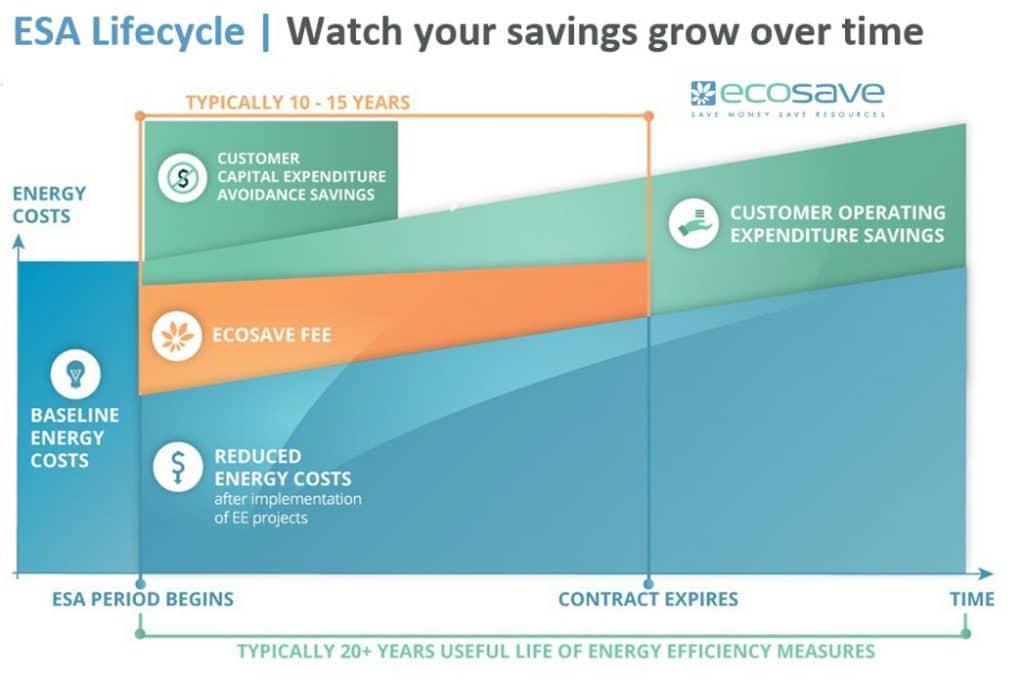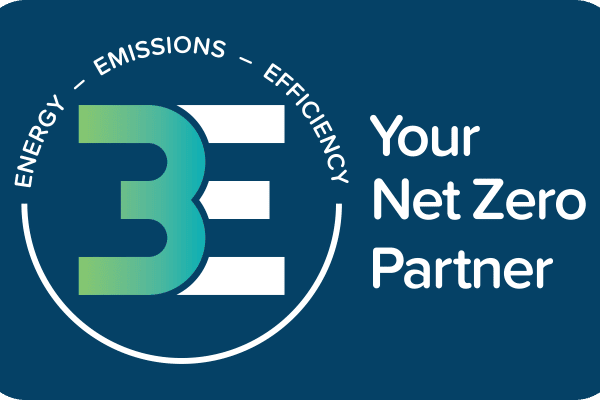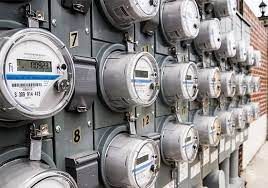Energy services agreements on the rise as capital budgets slashed due to COVID-19:
Operational cost savings and reducing carbon emissions remain top priorities for businesses and organisations as they deal with the financial impact of economic recession due to COVID-19 lock-downs and the ever-present risks associated with climate change.
Traditionally, performance-based energy efficiency projects have been the preferred delivery model for organisations seeking to reduce their energy consumption and greenhouse gas emissions (e.g. Energy Performance Contracting and Guaranteed Energy Savings Projects).
While traditional performance-based projects provide guaranteed savings through holistic turn-key solutions, organisations are still required to source their own funding to pay for capital upgrades (see related post: 7 ways to fund energy savings).
In recent weeks however, Ecosave has fielded comparatively high number of inquiries from various organisations about alternative models or finance mechanisms to fund energy efficiency projects that either alleviates or eliminates initial capital outlay requirements – citing budget cuts amidst economic recession due to COVID-19. As a result, there has been increasing interest in Energy Service Agreements.
The main reason why Ecosave clients (including universities and local government councils among others) are now seriously considering energy services agreements, is that it allows them to implement energy cost and greenhouse gas reduction measures without having to pay a single cent or incur debt.

‘Energy Savings as a Service’
Similar to how cloud-based technology service providers disrupted and revolutionised the information and communications technology sector through ‘Software-as-a-Service’ models, so too has the energy service sector been changed by the introduction of energy service agreements. Where the focus shifted from the client owning and maintaining infrastructure (servers) on-site to outsourcing to service providers that deal with operating and maintaining the hardware but have an obligation to deliver particular services in a service-level agreement contract.
An Energy Services Agreement is similar.
An Energy Services Agreement is a fully-funded ‘Energy as a Service’ (EaaS) delivery model where an Energy Services Company (ESCO) pays for the capital upgrades – owns and maintains the equipment – and in exchange for monthly fees they deliver energy savings in a performance-based service agreement.
Some of the key features of quality energy service agreements include:
- No capital outlay required to implement energy efficiency and equipment upgrades
- ESCO charges a service fee based on the savings generated – no savings equals no service fee
- Positive cash flow – savings generated from energy conservation measures (ECMs) typically exceed the monthly service fees
- Off-balance-sheet treatment – the agreement is structured around fees to deliver energy savings and benefits of all ECMs (i.e. savings) are reflected in the operational budget, not the capital expenditure budget – therefore an Energy Services Agreement is excluded from the balance sheet (no debt obligations or liabilities)
- Avoided cost savings – by taking the opportunity to replace ageing or near end-of-life central plant and equipment
- The ESCO carries all financial/credit risk and technical risk of funding, owning and maintaining the installed ECMs
- Guaranteed savings over a long term period – typically 7 – 15 years
For medium-to-large businesses and organisations seeking to fund a large energy efficiency project (>$500k), there is no better model than an energy service agreement because the ESCO carries all the financial and technical risks associated with the energy efficiency and equipment upgrades.
Although energy service agreements have been around for many years both in Australia and internationally, they have had low adoption rates in Australia – partially due to relatively small number of ESCOs prepared to carry all the associated financial and performance risks.
Ecosave pioneered innovation and commercialisation of Energy Services Agreement in Australia and the U.S. with its flagship funding solution – Energy Services Agreement (ESA) – and have successfully implemented more than 20 ESAs over the last six years.
The below diagram illustrates the life-cycle and short-term and long-term cost savings of Ecosave Service Agreement (ESA).
Does your company or organisation want to reduce energy costs and greenhouse gas emissions, but don’t want to pay a single cent upfront or incur debt to fund capital upgrades? If so, then an ESA may be just the solution for you!
Contact us to learn more about how Ecosave Service Agreements can assist your organisation deliver fully-funded energy efficiency upgrades.






